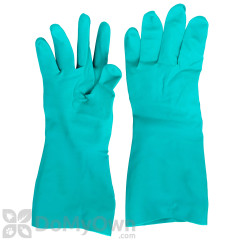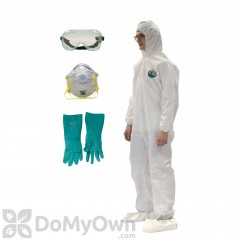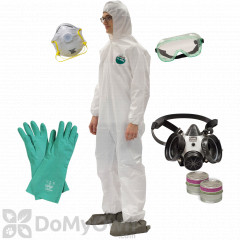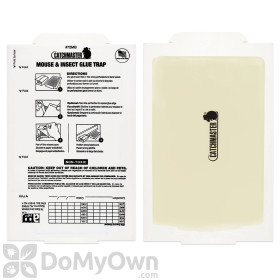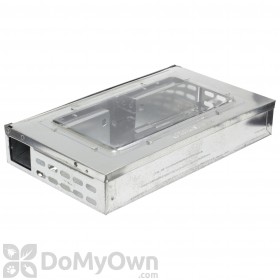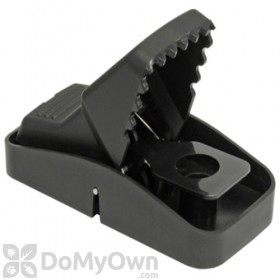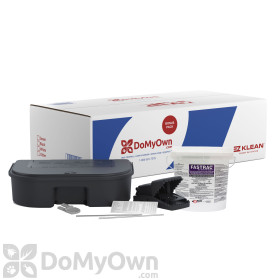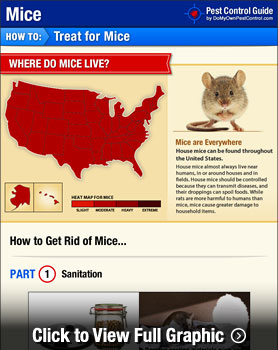Sanitation, Catching, & Removing Mice
Select a method below to better understand how they help with removing mice, or continue reading to learn how to get rid of mice in two steps.
Sanitation
Reducing Mouse Populations
- Store any bulk food items in large metal containers or other airtight containers with tight-fitting lids, rather than bags or boxes that can easily be gnawed through.
- Remove clutter such as paper and cardboard that mice might use to build their nests
- Keep dog food or other pet food stored in a Rubbermaid container overnight.
- Keep a tight-fitting lid on all trash cans
Catching & Removing Mice
Trapping and Baiting
After you have followed the sanitation measures outlined above, you can start the mice removal process. There are several methods available for both indoor and outdoor mouse control, and you should choose the method(s) that best fit your needs and preferences.
Products needed for Step 2
Glue Traps, Snap Traps and Live Catch Traps
Products needed:
- Selected trap
- Bait for trap
Trapping is the preferred method of indoor control. There are several advantages to using traps for mouse removal indoors. Trapping does not require the use of mouse poisons indoors. Using mouse traps allows you to know if a mouse has been trapped so that you can be sure your efforts are working. And last, trapping allows you to remove the carcass to avoid bad odors and secondary insect infestations from decaying carcasses.
Snap Traps:
A mouse snap trap is a wooden, metal, or plastic trap with a powerful snap hinge intended to kill rodents quickly. Snap traps are typically used with some form of bait to lure the rodent to the trap.
Snap traps should be placed in areas where you noticed activity during your inspection. To maximize the chances of rodents passing over traps during their travels, traps should be placed perpendicular to the wall with the trigger end almost touching the wall. Alternatively, you can place a pair of traps end to end, parallel to the wall, with the triggers positioned to intercept rodents traveling from either direction.
The right mouse bait will lure mice to the snap trap, especially when most other food sources have been eliminated through proper sanitation.
Ideal baits for trapping mice and other rodents are those that give off an aroma, such as nuts, nut butters, cereal, or dog food. Mouse and rat attractants made for this use also works well. Peanut butter is a common recommendation for baiting mice, but oils from the food can damage some traps over time. Check the trap manufacturer's bait recommendations before use.
When using solid baits, tie the bait to the trigger. This will prevent rodents from being able to remove unsecured bait without setting off the trap.
Where other food sources are abundant and cannot be eliminated, soft nesting material such as dental floss, cotton, or Styrofoam tied to the trigger may do the trick.
Glue Traps:
A mouse glue trap is a flat piece of cardboard or a shallow plastic tray that is covered in a specially designed adhesive that can be placed flush against floors and walls where rodents travel. When mice travel over the glue trap, they become "stuck" and will eventually die. Some traps come pre-scented to help lure the rodents to walk over the trap. In most cases, simply placing the trap flush against the wall in areas where mice have been active is all that is needed.
Live Catch Traps:
Live catch mouse traps for mice typically allow you to catch multiple mice in one trap. The traps are usually made of metal, and some have clear windows on top to allow you to view inside. A mouse is attracted to small dark areas and tunnels and will enter the box out of curiosity. You can also bait the trap with the same types of bait used in snap traps. You will need to check with your local authorities to see what the ordinances are on catching and releasing mice in your region. Some live catch traps also give you the option to add a glue board to kill the mice. This method is often used when you want to keep the glue board protected from non-target animals and children, but still be able to use it to catch mice.
Rodenticide Baiting
While you can use mouse bait poison indoors, we strongly urge you NOT to do so. After a mouse consumes a lethal dose of the bait, it is possible that the animal can get into an area that is inaccessible, making removing the carcass impossible. This can lead to a terrible odor and a secondary insect infestation. If you choose to bait inside, please place mouse bait inside tamper-resistant bait stations and place the stations out of reach of non-target animals and children. You should remove mouse carcasses as soon as they are located.
Myths revealed:
There is no such product that will cause rodents to go outside of a building, go outside to seek water (they already have water inside!) or dry up so they do not have an odor when they die. These myths were likely introduced by unscrupulous salesmen to get homeowners to allow the baits to be used inside their homes.
Pro Tip
In some cases, you may run into a rodent that seems to avoid your traps at all costs, perhaps because of narrowly escaping a trap in a previous encounter. This will require a more clever strategy. One method is to camouflage the trap by first burying an unset trap in grain, straw, or sawdust in a shallow pie pan. Baits should be placed in 3 to 4 small pieces on top of the pan with the trap hidden. Once the rodent accepts these baits without issues for several nights, the same bait can be used on the set trap.
